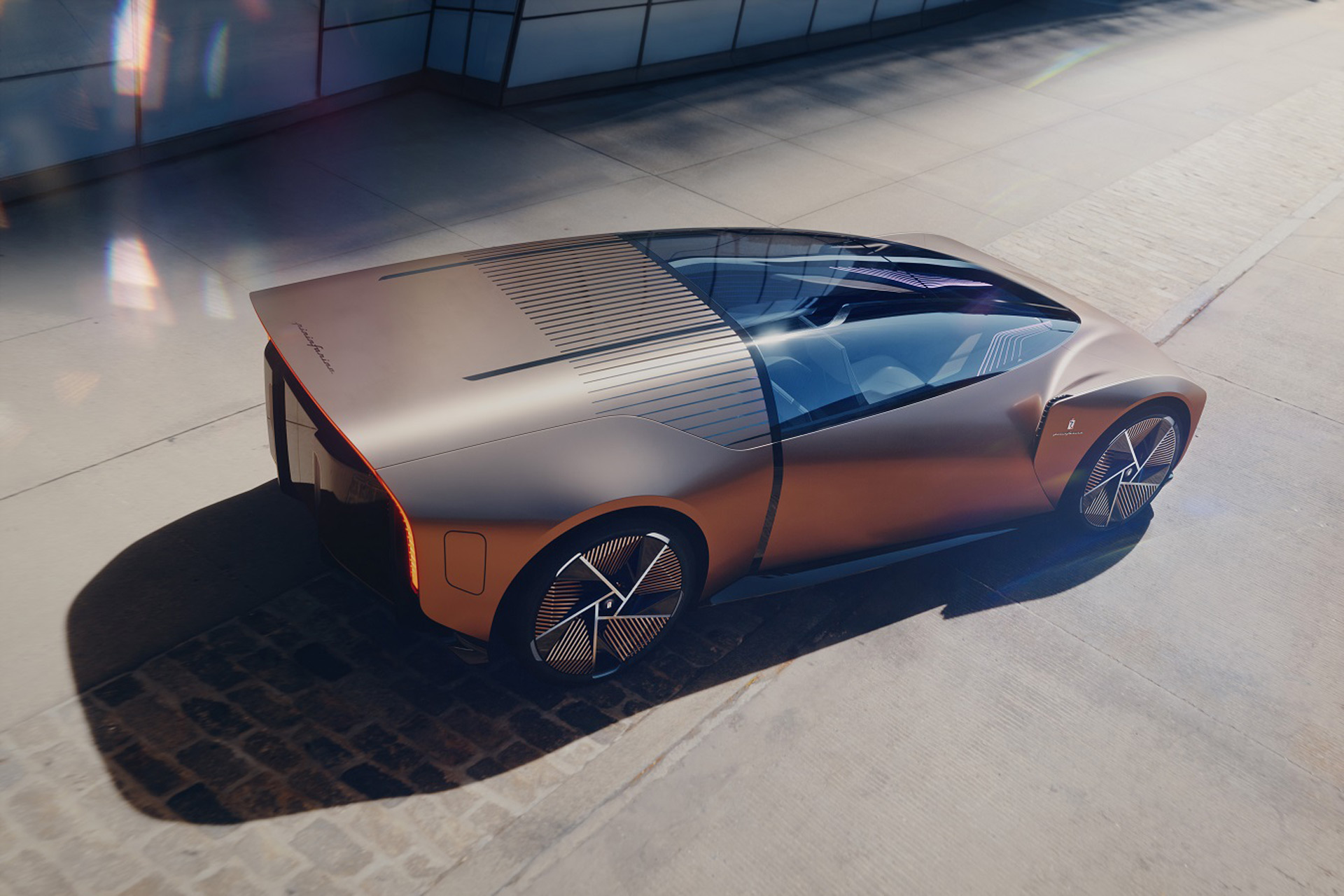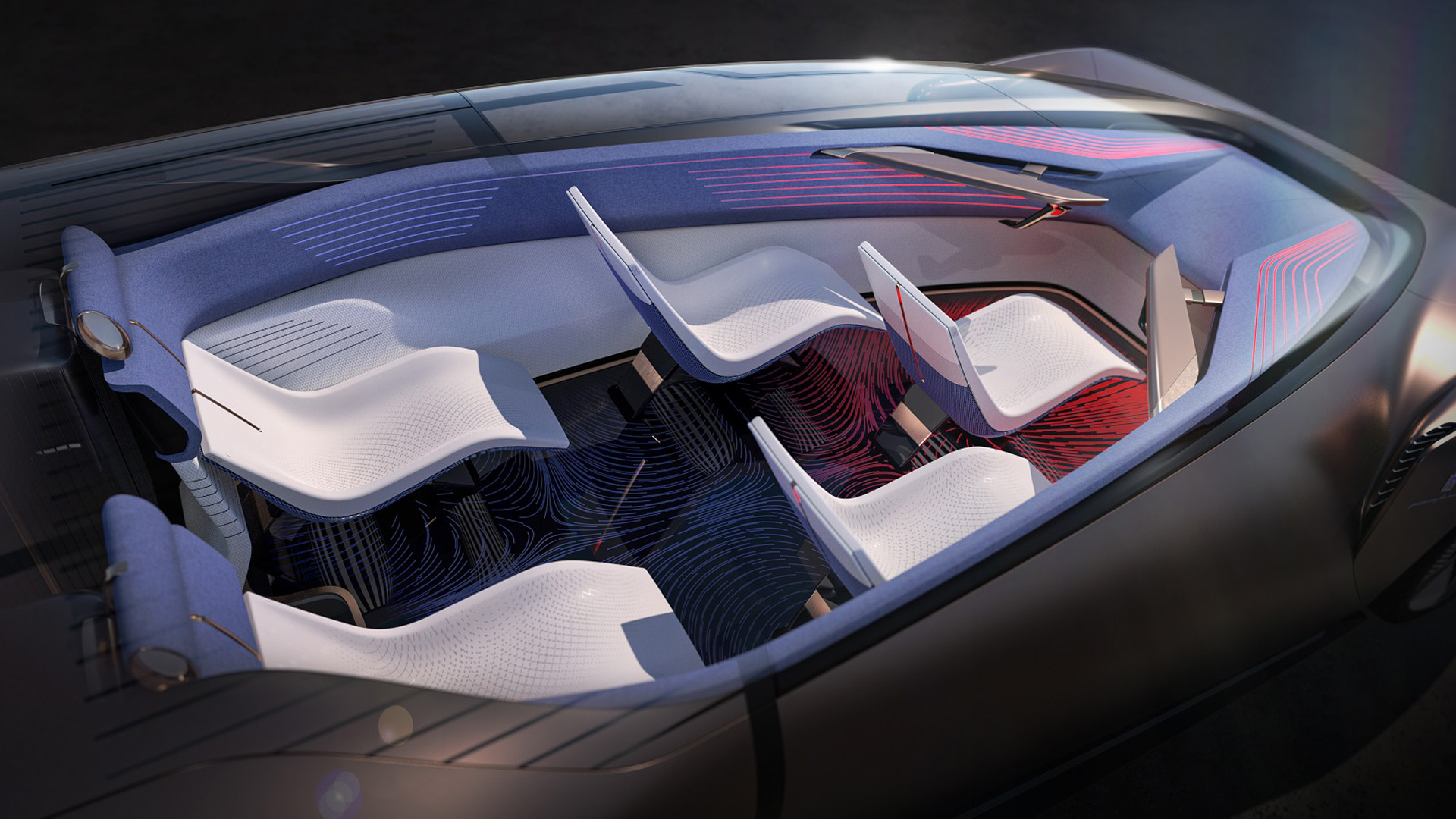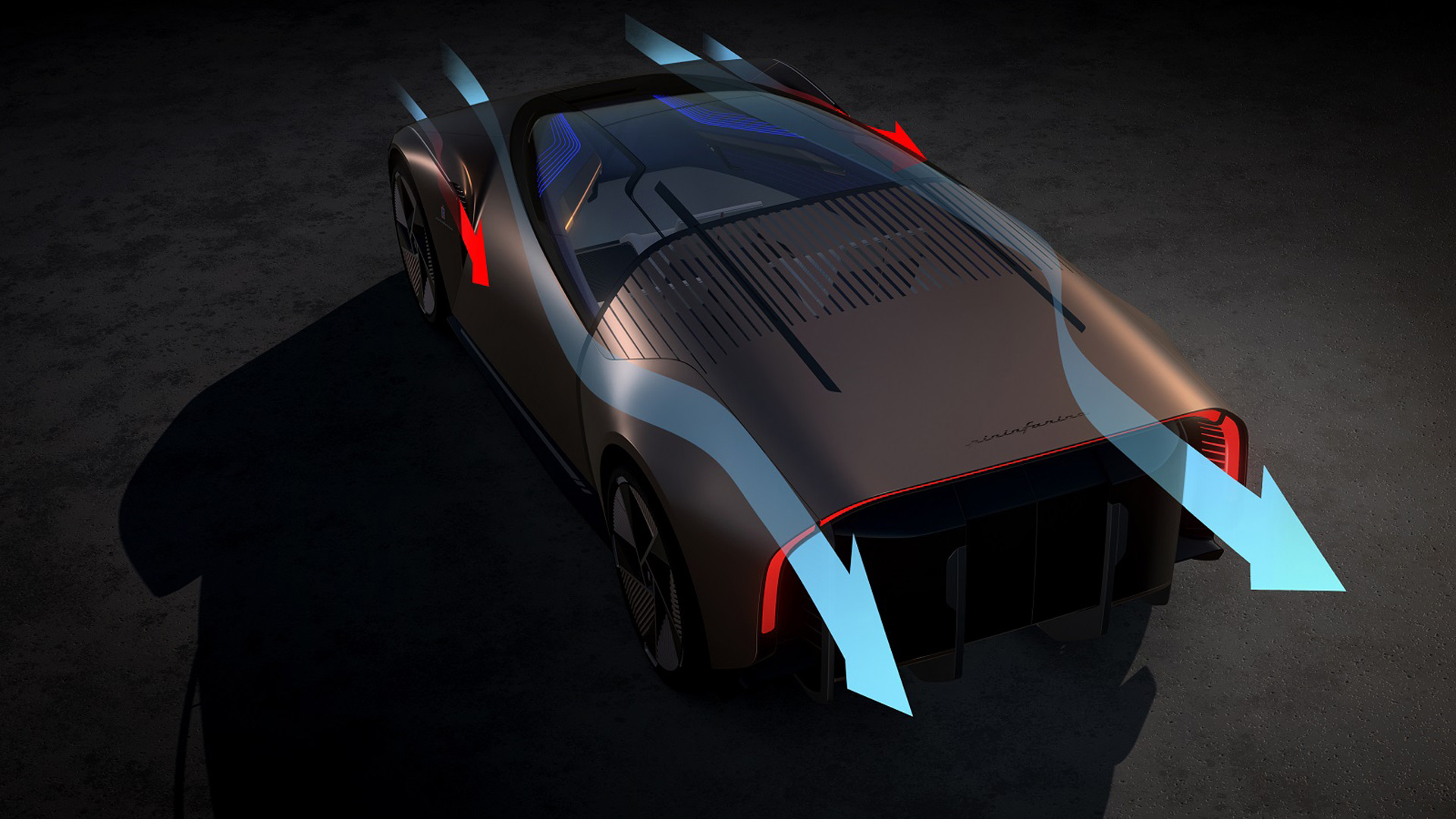Italian Design House Pininfarina Develops Teorema Using Virtual Reality

According to Motor Authority, Italian design Pininfarina developed the company's first vehicle by utilize VR technologies, namely, Teorema.
Pininfarina used holographic AR technology by Swiss company WayRay, which enables physical objects represented in virtual world to be aligned with physical reality. Furthermore, WayRay is also partnering with a number of car makers to produce AR head-up displays.
Teorema concept features the driver's seat located in the center and two pairs of passenger seat in the subsequent rows, with a total of five seats. The body style design was referenced from it's 2008 Sintesi concept.

The idea of the design is so that the car can drive autonomously, and when that happens the driver's seats can be rotated 180 degrees to face the passenger rows. These two rows can also be adjoined to form two beds.

When the driver goes into self-driving mode, a pair of stick control folds out from the dashboard. This type of design is far more compare than tradition steering wheel that requires to be folded.
Germany's Benteler is the company behind the modular electric vehicle's platform, the same engineering company that is working Pininfarina's cars following the Battista hypercar.
The Teorema is 1,400 mm tall and 5,400mm long, same length as the Mercedez Maybach S-class. The design idea was based on a skateboard pack with batteries, saving as much space for up to five people. The self-driving electric vehicle does not have any doors, where the entrance is located from the rear end, with a roof that moves up and forward.
Expect the Teorema to quietly shuttle you and your passengers to the next destination, where you can sit and lay down and take a nap. The windows can even be dimmed if you prefer some privacy.

